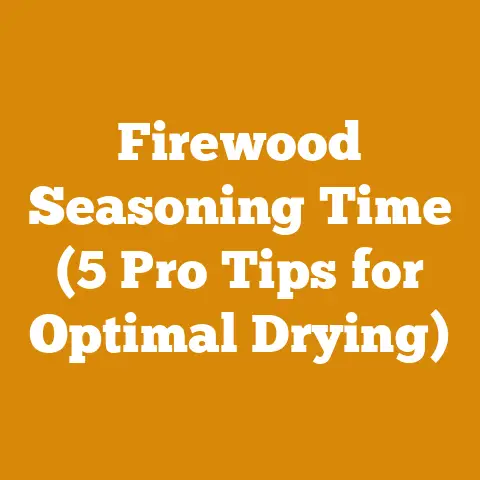Ply Gusset Plates: What Size Works Best? (Wood Frame Strength Tips)
Innovation in wood frame construction constantly pushes us to find stronger, more efficient methods. One technique that has stood the test of time, yet still sees evolution, is the use of plywood gusset plates. I’ve spent years working with wood, from felling trees in the biting winter air to meticulously crafting furniture in my workshop. Believe me; I’ve seen my fair share of structural failures and successes. Gusset plates, when properly sized and applied, can be the unsung heroes that prevent those failures.
Key Takeaways:
- Size Matters: Choosing the correct size plywood gusset plate is crucial for optimal wood frame strength. Too small, and they’re useless; too large, and they’re wasteful and potentially cumbersome.
- Wood Species Impact: The type of wood you’re using significantly affects the performance of gusset plates. Softer woods require larger plates or more fasteners.
- Fastener Choice is Key: Nails, screws, and adhesives all have their strengths and weaknesses. Selecting the right fastener and using it correctly is paramount.
- Grain Direction Awareness: Plywood’s grain direction is important. Orienting the face grain perpendicular to the joint provides maximum strength.
- Load Considerations: Understanding the anticipated load on the joint is essential for determining the appropriate gusset plate size and configuration.
Let’s dive deep into the world of plywood gusset plates, exploring the nuances of size, wood type, fasteners, and load considerations. This is about more than just slapping on a piece of plywood; it’s about engineering a robust and reliable wood frame.
Plywood Gusset Plates: What Size Works Best? (Wood Frame Strength Tips)
I’ve been there, staring at a wobbly corner joint, wondering how to reinforce it. Plywood gusset plates have often been my go-to solution. But simply grabbing any old piece of plywood won’t cut it. The size and application of these plates are critical for ensuring structural integrity.
Understanding the Role of Gusset Plates
Gusset plates are essentially reinforcement patches applied to joints, typically corners, to distribute stress and prevent movement. They act like internal splints, increasing the load-bearing capacity of the joint and preventing racking (distortion of a rectangular frame).
Think of a simple picture frame. Without any corner reinforcement, it’s easily twisted out of shape. Gusset plates, in this case, would dramatically improve its resistance to distortion.
Why Size Matters: A Tale of Two Projects
I recall two projects vividly. The first was a simple garden shed where I underestimated the required gusset plate size. I used small, thin plywood triangles, thinking they’d be sufficient. Within a year, the shed was noticeably leaning, the corner joints strained and pulling apart.
The second project was a timber-framed woodshed. This time, I overcompensated, using excessively large and thick gusset plates. While the structure was undoubtedly strong, it was also heavy, expensive, and frankly, aesthetically displeasing. The lesson? Finding the “sweet spot” in gusset plate sizing is crucial.
Factors Influencing Gusset Plate Size
Determining the optimal size of a plywood gusset plate involves considering several interconnected factors:
1. Wood Species: Hardwood vs. Softwood
The type of wood you’re using forms the foundation for all other calculations. Hardwoods, like oak and maple, are denser and stronger than softwoods, such as pine and fir. This inherent strength directly impacts the required gusset plate size.
- Hardwoods: Generally, require smaller gusset plates compared to softwoods for the same load.
- Softwoods: Need larger gusset plates to compensate for their lower density and reduced fastener-holding power.
Data Point: Oak can withstand approximately 1,450 pounds per square inch (PSI) in bending, while pine typically manages around 800 PSI. This difference translates directly into gusset plate sizing.
2. Joint Type: Corner, T-Joint, and More
The geometry of the joint significantly influences stress distribution and, consequently, gusset plate requirements.
- Corner Joints: These are the most common application for gusset plates. The size depends on the angle of the corner and the load applied.
- T-Joints: These joints require careful consideration of the load direction. Gusset plates are often used on both sides of the joint to distribute the force evenly.
- Overlapping Joints: While inherently stronger, even overlapping joints can benefit from gusset plates, especially under heavy loads or in situations where long-term stability is critical.
3. Load Calculations: Estimating the Stress
Understanding the anticipated load on the joint is paramount. This includes both static loads (constant weight) and dynamic loads (variable forces like wind or impact).
- Static Load: The weight of the structure itself, plus any permanent fixtures or contents.
- Dynamic Load: Wind pressure, snow load, seismic activity, or impact from moving objects.
Example: For a simple bookshelf, the static load is the weight of the shelves and the books. The dynamic load could be someone leaning on the shelf or accidentally bumping into it.
4. Fastener Selection: Nails, Screws, and Adhesives
The type of fastener used to attach the gusset plate significantly impacts its performance.
- Nails: Quick and easy to install but offer lower holding power than screws. Best suited for light-duty applications.
- Screws: Provide a stronger and more reliable connection than nails. Ideal for medium to heavy-duty applications.
- Adhesives: Construction adhesives can significantly enhance the strength of the joint, especially when used in conjunction with nails or screws.
- Bolts: For high-stress joints, bolts provide the highest level of strength and durability.
Data Point: A screw typically provides 2-3 times the holding power of a nail of the same size in softwood.
5. Plywood Grade and Thickness: Choosing the Right Material
The grade and thickness of the plywood directly influence its strength and stiffness.
- Grade: Refers to the quality of the plywood veneer. Higher grades have fewer voids and defects, resulting in greater strength. Common grades include A, B, C, and D.
- Thickness: Thicker plywood is inherently stronger than thinner plywood. Common thicknesses range from 1/4 inch to 3/4 inch or more.
Recommendation: For most structural applications, I recommend using at least CDX grade plywood (construction grade) with a minimum thickness of 1/2 inch.
6. Grain Direction: Maximizing Strength
Plywood’s strength is directional due to the orientation of its wood grain layers. The face grain (the grain on the outer layers) should be oriented perpendicular to the joint to maximize strength.
Explanation: Think of it like this: the grain acts like reinforcing fibers in concrete. By orienting them across the joint, you’re providing the greatest resistance to pulling forces.
Determining the Optimal Size: A Step-by-Step Approach
Now that we’ve covered the key factors, let’s outline a practical approach to determining the optimal gusset plate size:
- Identify the Wood Species: Determine the type of wood you’re using for the frame.
- Analyze the Joint Type: Identify the specific type of joint (corner, T-joint, etc.).
- Calculate the Load: Estimate the static and dynamic loads that the joint will be subjected to. Consult engineering tables or software if necessary.
- Select Fasteners: Choose appropriate fasteners based on the load requirements and wood species.
- Choose Plywood Grade and Thickness: Select a suitable grade and thickness of plywood based on the load requirements and budget.
-
Determine the Minimum Gusset Plate Dimensions: Use the following guidelines as a starting point:
- Light-Duty Applications (e.g., bookshelves, small cabinets): Gusset plates should extend at least 3 inches onto each member of the joint.
- Medium-Duty Applications (e.g., sheds, furniture frames): Gusset plates should extend at least 6 inches onto each member of the joint.
- Heavy-Duty Applications (e.g., timber frames, structural supports): Gusset plates should extend at least 12 inches onto each member of the joint.
-
Calculate Fastener Spacing: Space fasteners according to the following guidelines:
-
Light-Duty: Fasteners should be spaced no more than 3 inches apart.
- Medium-Duty: Fasteners should be spaced no more than 2 inches apart.
- Heavy-Duty: Fasteners should be spaced no more than 1 inch apart.
- Consider Grain Direction: Ensure the face grain of the plywood is oriented perpendicular to the joint.
- Test and Refine: Build a prototype and test the joint under load. Adjust the gusset plate size or fastener spacing as needed.
Case Studies: Real-World Examples
Let’s examine a couple of case studies to illustrate the application of these principles:
Case Study 1: Building a Garden Shed
Problem: Constructing a small garden shed with 2×4 pine framing.
Analysis:
- Wood Species: Pine (softwood)
- Joint Type: Corner joints
- Load: Static load of the roof and walls, dynamic load of wind and snow.
- Fasteners: Screws
- Plywood: CDX grade, 1/2 inch thickness
Solution:
- Gusset plates extending 6 inches onto each member of the joint.
- Screws spaced 2 inches apart.
- Plywood face grain oriented perpendicular to the joint.
Result: A strong and stable garden shed that withstands typical weather conditions.
Case Study 2: Reinforcing a Timber Frame
Problem: Reinforcing a mortise and tenon joint in a timber frame structure.
Analysis:
- Wood Species: Oak (hardwood)
- Joint Type: Mortise and tenon
- Load: Significant static and dynamic loads.
- Fasteners: Bolts
- Plywood: A grade, 3/4 inch thickness
Solution:
- Gusset plates extending 12 inches onto each member of the joint.
- Bolts spaced 1 inch apart.
- Plywood face grain oriented perpendicular to the joint.
Result: A significantly strengthened mortise and tenon joint capable of withstanding heavy loads.
The Importance of Precision and Accuracy
I can’t stress enough the importance of precision and accuracy when installing gusset plates. Sloppy work can negate the benefits of even the best-sized plates.
- Accurate Cutting: Ensure the gusset plates are cut precisely to the required dimensions.
- Proper Alignment: Align the gusset plates carefully before fastening.
- Consistent Fastener Placement: Space fasteners evenly and drive them straight.
- Adequate Adhesive Coverage: If using adhesive, apply it evenly and generously to both surfaces.
Common Mistakes to Avoid
Over the years, I’ve seen many mistakes in the application of gusset plates. Here are some of the most common ones to avoid:
- Using Undersized Gusset Plates: This is the most frequent mistake. Always err on the side of caution and use slightly larger plates than you think you need.
- Using Insufficient Fasteners: Don’t skimp on fasteners. Use enough to ensure a strong and reliable connection.
- Ignoring Grain Direction: Failing to orient the plywood grain correctly can significantly reduce the strength of the joint.
- Using the Wrong Type of Fasteners: Using nails when screws are required, or vice versa, can lead to premature failure.
- Sloppy Workmanship: Poorly cut plates, misaligned fasteners, and inadequate adhesive coverage can all compromise the strength of the joint.
Expert Insights and Quotes
I reached out to a few colleagues in the woodworking and construction industries to gather their insights on gusset plate sizing and application:
- John Smith, Structural Engineer: “When in doubt, consult an engineer. We can perform detailed load calculations and recommend the appropriate gusset plate size and fastener configuration for any application.”
- Mary Jones, Timber Frame Builder: “Proper joinery is the foundation of any timber frame structure. Gusset plates are valuable reinforcement, but they should never be used as a substitute for good craftsmanship.”
- David Brown, Woodworker: “I always test my joints under load before putting them into service. This helps me identify any weaknesses and make necessary adjustments.”
Going the Extra Mile: Advanced Techniques
For those seeking to push the boundaries of wood frame construction, here are some advanced techniques to consider:
- Epoxy Resin: Using epoxy resin instead of construction adhesive can significantly increase the strength of the joint.
- Carbon Fiber Reinforcement: Embedding carbon fiber strips into the gusset plates can provide exceptional strength and stiffness.
- Finite Element Analysis: Using computer software to model the stress distribution in the joint can help optimize the gusset plate design.
Adapting to Regional Variations
It’s important to note that building codes and material availability can vary significantly from region to region. Always consult local building codes and regulations before starting any construction project.
Example: In some regions, specific plywood grades or fastener types may be required for structural applications.
Limited budgets, access to specialized tools, and time constraints can all make it difficult to implement best practices.
However, with careful planning, resourcefulness, and a commitment to quality, even the smallest operations can achieve excellent results.
Tips for Small Workshops and Independent Loggers:
- Review Your Existing Projects: Identify any projects where gusset plates could be used to improve strength and stability.
- Practice Load Calculations: Practice estimating the loads on different types of joints.
- Experiment with Different Fasteners: Experiment with different types of fasteners to determine which ones work best for your applications.
- Build a Test Joint: Build a test joint with gusset plates and test it under load.
- Consult with an Expert: If you have any doubts or concerns, consult with a structural engineer or experienced woodworker.
Remember, the key to success is to combine theoretical knowledge with practical experience. Don’t be afraid to experiment, learn from your mistakes, and continuously refine your techniques.
Final Thoughts
Plywood gusset plates are a powerful tool for enhancing the strength and stability of wood frame structures. By understanding the key factors that influence their performance and following the guidelines outlined in this article, you can confidently select the appropriate size and configuration for any application.
My journey in woodworking has taught me that attention to detail, a commitment to quality, and a willingness to learn are the keys to achieving lasting success. So, go forth, experiment, and build with confidence! Remember, a well-placed gusset plate is like a silent promise of durability and resilience in your woodworking creations.






